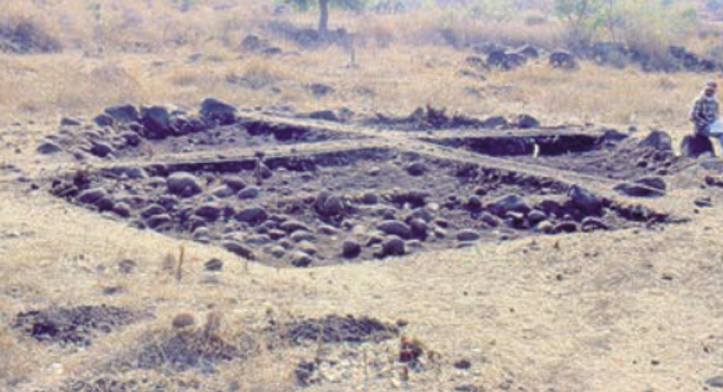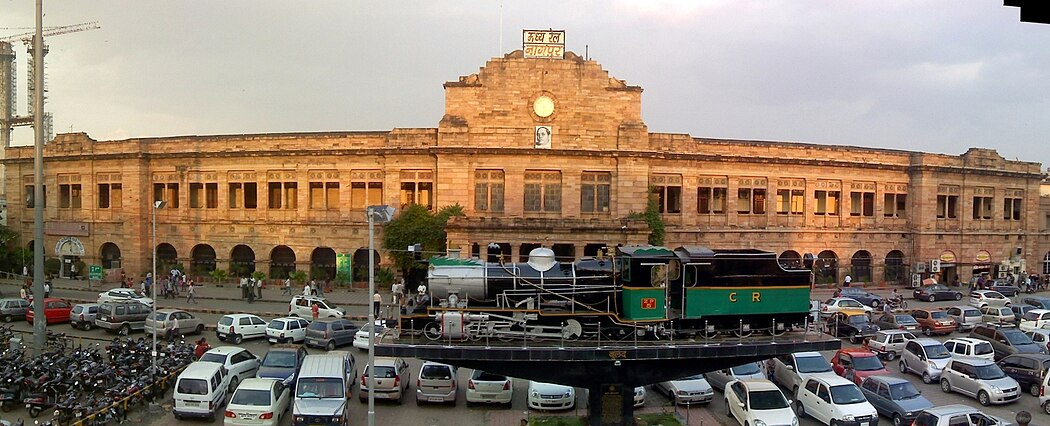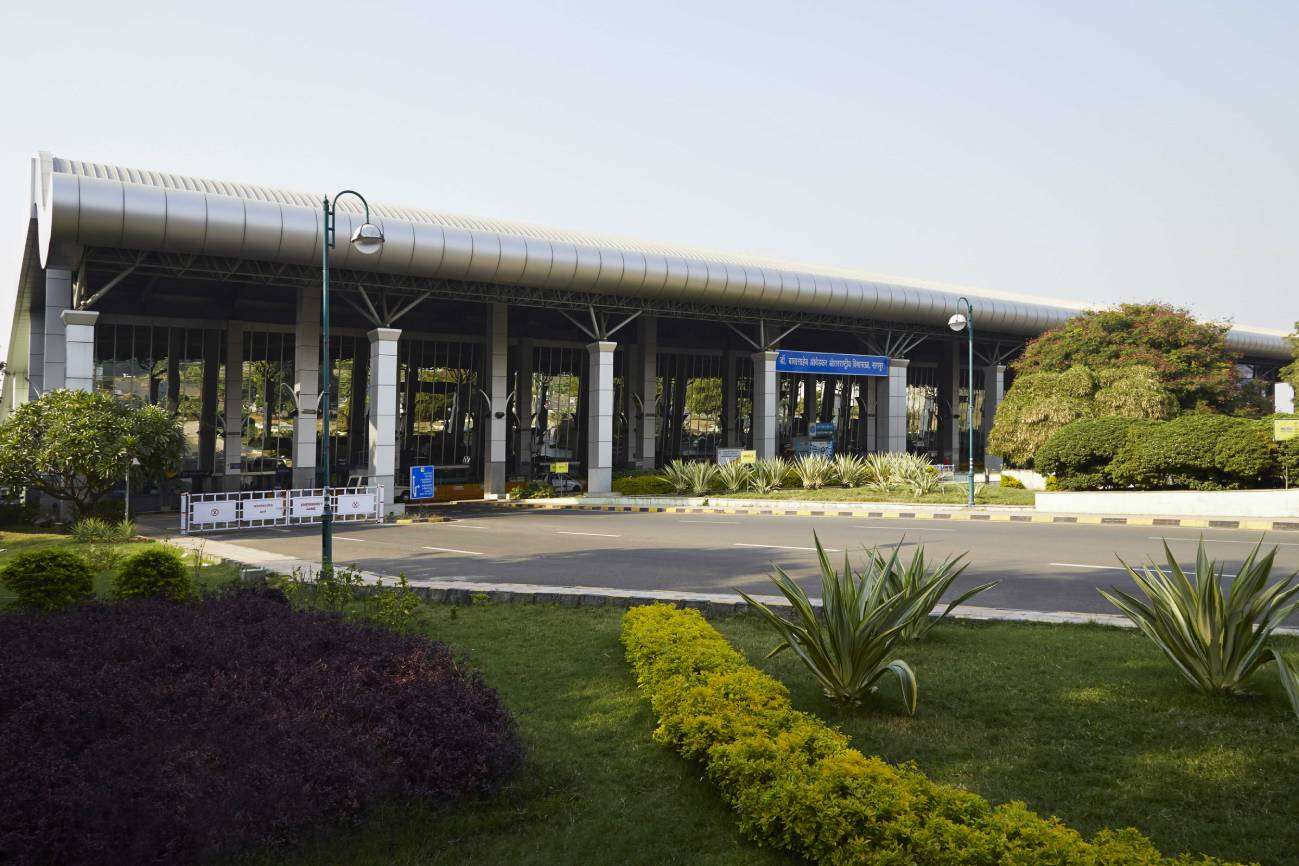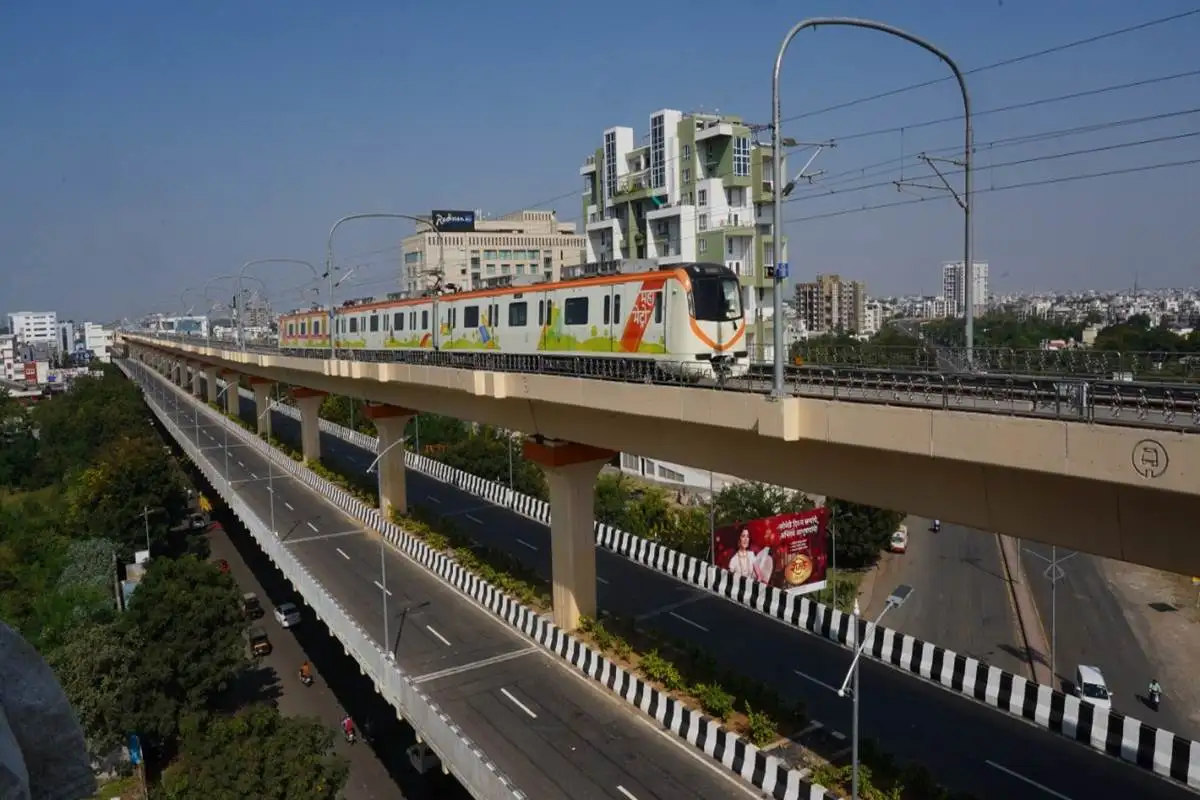Contents
- History
- Ancient Trade Routes
- Modes of Transportation in the District
- Railway Systems
- Overview of Bus Networks
- Air Transport
- Metro Services
- Traffic and Road Safety in Nagpur
- Communication Networks
- Newspapers & Magazines
- Graphs
- Road Safety and Violations
- A. Cases of Road Safety Violations
- B. Fines Collected from Road Safety Violations
- C. Vehicles involved in Road Accidents
- D. Age Groups of People Involved in Road Accidents
- E. Reported Road Accidents
- F. Type of Road Accidents
- G. Reported Injuries and Fatalities due to Road Accidents
- H. Injuries and Deaths by Type of Road
- I. Reported Road Accidents by Month
- J. Injuries and Deaths from Road Accidents (Time of Day)
- Transport Infrastructure
- A. Household Access to Transportation Assets
- B. Length of Roads
- C. Material of Roads
- Bus Transport
- A. Number of Buses
- B. Number of Bus Routes
- C. Length of Bus Routes
- D. Average Length of Bus Routes
- E. Daily Average Number of Passengers on Buses
- F. Revenue from Transportation
- G. Average Earnings per Passenger
- Communication and Media
- A. Household Access to Communication Assets
- B. Newspaper and Magazines Published
- C. Composition of Publication Frequencies
- Sources
NAGPUR
Transport & Communication
Last updated on 6 November 2025. Help us improve the information on this page by clicking on suggest edits or writing to us.
Nagpur is often referred as the second capital of Maharashtra, and holds much importance in the state’s transport and communication landscape. Historically, it served as the capital of the Central Provinces and Berar during British rule, and later of Madhya Pradesh, before the reorganisation of states placed it in Maharashtra. This legacy continues to influence its role as a major trade and transit hub. Over time, the district has witnessed significant infrastructure development to support both intra-city movement and regional connectivity. The district is connected by rail, bus, auto-rickshaw, and air travel, with the availability and reach of these systems offering a glimpse into its evolving landscape.
History
Ancient Trade Routes
Transportation networks have always been essential to human civilization, as they connect distant regions and support the exchange of goods, ideas, and cultures. They have shaped economies, and they have helped communities grow through trade and communication. Nagpur appears to have been a notable node in early trade networks. Excavations at various archaeological sites have revealed evidence of settlements, rulers, merchants, and artisans who contributed to the socio-economic fabric of the area in the early days.
One of the most significant archaeological sites in Nagpur which is indicative of this is Mahurjhari. Excavated first by Mr. S.B. Deo between the years 1970 and 1972, the site extends over some six square kilometres. Mahurjhari distinguished itself as a centre of bead production, a fact attested by the recovery of thousands of beads fashioned from semi-precious stones here. Notably, subsequent excavations, notably those undertaken by Mr. R.K. Mohanty between 2001 and 2004, have indicated that the site enjoyed a span of activity from the early Iron Age into the early historic period, that is, from approximately 1000 B.C.E. to 300 C.E.
The scale and nature of bead production imply routes by which stone material not locally sourced was brought to Mahurjhari and from which worked beads were conveyed to other settlements. Such routes likely formed part of a wider system of inland trade paths connecting the Deccan with coastal regions and external markets.

Additional traces for wider connections come from Roman coin finds within the district. S.J. Mangalam (1990) records eleven Roman aurei from the Adam hoard in Nagpur district, alongside similar finds in Solapur and East Khandesh. These coins suggest that Roman trade, which reached the west coast of India, extended inland through established routes that may have passed through the Nagpur region.
Later, during the reign of the Gonds in the 16th century, Nagpur’s role as a regional node appears to have expanded. The Gond rulers, with their focus on agriculture and local governance, helped develop Nagpur as a market centre. Though specific details about transport systems in this period are limited, it is reasonable to infer that animal caravans and pack bullocks played the main role, as they did elsewhere in India.
The founding of Nagpur city by the King, Bakht Buland Shah in 1702, and its rise as a capital soon after, reinforced the need for better connections. With the transfer to Maratha rule in 1743, these networks likely continued and perhaps improved further to handle growing trade, especially in cotton. Records from the district Gazetteer (1971) show that cotton from Nagpur went to Hinganghat for sorting and sale, and from Katol to Amravati (which are all clear examples of how local production depended on regional transport routes).
In 1862, under the administration of Sir Richard Temple, road construction projects were undertaken to connect the district more systematically. By 1870, both roads and rail lines had been laid out. These works replaced earlier informal paths with planned routes linking Nagpur with surrounding regions in multiple directions. The introduction of these roads and the railway extended existing networks and supported the further movement of agricultural and other goods.
Modes of Transportation in the District
Railway Systems
Nagpur district is served by an extensive railway network that handles both passenger and freight movement. Notably, it holds a distinctive position within Indian Railways as it serves as the divisional headquarters for two separate zones — Central Railway (CR) and South East Central Railway (SECR) — a distinction otherwise found only in a few cities such as Lucknow, apart from the main zonal headquarters cities of Mumbai and Kolkata.
The main junction in the district is the Nagpur Station (NGP), which is classified as an A+ grade station, with a daily traffic of over 200 trains. Other stations within the district include Narkher, Ajni, Katol, Kamptee, Itwari, Kalmeshwar, Buti Bori, Mowad, and Bamhani, serving various talukas. It is important to note that the district comprises fourteen talukas but has ten main stations in operation.

The main lines passing through the district include the Grand Trunk (GT) route from Itarsi to Ballarshah and the Mumbai–Howrah corridor from Gondia to Badnera. North–south and east–west traffic crosses through the district, making sections such as the Nagpur–Wardha line among the busiest in the country. Additional branch lines operate between Amla–Chhindwara, Narkhed–Amravati, and Majri–Pimpalkutti on broad gauge, and Pulgaon–Arvi on narrow gauge.

The railway network in Nagpur district developed gradually during the British colonial period. Prior to the introduction of railway lines, the district’s trade relied mainly on bullock carts and regional routes that connected Nagpur with neighbouring areas such as Bhandara, Balaghat, and parts of Chhattisgarh. When Nagpur came under British control in 1853 and was declared a district in 1854, its administrative importance increased further when it was made the capital of the Central Provinces in 1861. This administrative role, along with local agricultural and mineral resources, likely contributed to the development of more dependable transport links to major markets.
Rail connections in the district were first established with the construction of the Bengal–Nagpur Railway, which opened in 1889. This line placed Nagpur on the Bombay–Howrah corridor and the Delhi–Madras Grand Trunk route, linking the district directly to major trade and administrative centres across India.
In 1952, the regrouping of Indian Railways reorganised these lines: the Bombay–Bhusawal–Nagpur and Nagpur–Itarsi routes, which had previously formed part of the Great Indian Peninsula Railway, were brought under the Central Railway zone, while the older sections of the Bengal–Nagpur Railway were placed under the South Eastern Railway. The district’s railway network has continued to expand under this framework and remains a key link for passenger movement as well as for the transport of goods, including manganese ore, coal, cotton, and oranges, to major cities such as Mumbai, Delhi, Kolkata, and Chennai.
Overview of Bus Networks
Nagpur district is served by a combination of city, suburban, and rural bus services that provide daily passenger transport within the city and to surrounding towns and villages. Local services within Nagpur city operate under the Aapli Bus system managed by the Nagpur Municipal Corporation, while regional and inter-district routes are operated by the Maharashtra State Road Transport Corporation (MSRTC). Together, they carry thousands of passengers every day and remain the main public transport link for both urban and rural areas.
Notably, recent records show that daily ridership for Aapli Bus has reached 1.50 lakh passengers, surpassing its earlier peak before the pandemic. The city fleet now includes 420 buses on over 100 routes, with more than a third of these running on electric power. The network has gradually added modern features such as real-time tracking, mobile ticketing, and UPI payment options through the Chalo app. The fleet is gradually adding more electric buses to reduce pollution and fuel costs.
Interestingly, a new pilot project is also being tested in the district. In 2024, Union Minister of Road Transport and Highways Nitin Gadkari announced a 132-seater electric bus developed in collaboration with Tata, with a focus on green energy. The bus is fitted with airplane-style seating and onboard attendants. This trial service is designed for longer routes within and around the city’s ring road, travelling about 49 km at a stretch, with rapid charging stops every 40 km. The aim is to provide cleaner and more comfortable travel on busy corridors, with cost projections between ₹35–40 per km, air-conditioning, and hostess service offering food and beverages.
Nagpur’s current bus system traces its beginnings to the early 1940s. According to the district Gazetteer (1971), organised passenger services first began in 1942, when Mechanical Transport Ltd. started running buses. A year later, in 1943, the company formed the Nagpur Omnibus Company under the same management, and by 1945 this was restructured and renamed the Provincial Transport Company Ltd. Government control followed soon after: in 1946, the company’s management shifted to the state, and by August 1955 it was operating fully as the Provincial Transport Services under government ownership.
To bring state-run services under one system, the Provincial Transport Services merged in July 1961 with the Bombay State Road Transport Corporation and the Marathwada State Transport, creating the Maharashtra State Road Transport Corporation (MSRTC), which still runs inter-district and regional routes today.
The States Reorganisation of November 1956 also reshaped routes: longer connections such as Nagpur–Jubbulpore, Nagpur–Seoni, and Nagpur–Chhapara were transferred to the Central Provinces Transport Services, while new local routes within Nagpur, Amravati, Arvi, and Jalalkheda were added. By 1958–59, services had expanded to new stops like Ramtek and Kamptee. By early 1961, the Provincial Transport network covered Nagpur, Bhandara, Wardha, Chandrapur (then Chanda), Amravati, and Yavatmal (then Yeotmal) districts. According to the district Gazetteer (1971), there were 92 rural routes at the time, with 35 starting from Nagpur city and connecting it to surrounding areas. In 1959–60, the network carried over 15.8 million passengers — about 43,000 each day — and city services alone covered nearly 1,300 km daily. Together, these figures show the scale the bus system had reached by the early 1960s.
Air Transport
Nagpur district is served by Dr. Babasaheb Ambedkar International Airport (IATA: NAG, ICAO: VANP), which provides domestic and international air connectivity for the region. The airport, located at Sonegaon about eight km south of Nagpur city centre, was, notably, commissioned to be built during the First World War in 1917–18 for the Royal Flying Corps and Royal Air Force. During the Second World War, it is noted in the district Gazetteer (1971) that the airport’s original structures were renovated to meet increasing demands.

Today, the airport is being expanded under the Multi-modal International Cargo Hub and Airport at Nagpur (MIHAN) project. MIHAN aims to transform Nagpur into a major centre for air cargo and logistics by upgrading the airport and integrating it with road and rail networks. The project includes the development of a Special Economic Zone (SEZ) and associated residential and commercial areas, covering about 40.25 square km in southern Nagpur.
The Government of Maharashtra established the Maharashtra Airport Development Company (MADC) to manage the project, which is funded by Indian banks, the state government, and the Airports Authority of India with an estimated investment of ₹30,000 crore. The upgraded facility is projected to handle up to 1.4 crore passengers and nearly 8.7 lakh tonnes of cargo annually.
Metro Services
Nagpur district is served by the Nagpur Metro, a rapid transit system operated by Maharashtra Metro Rail Corporation Limited (MAHA-METRO). It has two main corridors — the North-South (Orange Line) and East-West (Aqua Line) — with a total length of about 38 km. The Metro connects key areas within Nagpur city and nearby parts of the district.

Traffic and Road Safety in Nagpur
Over time, as illuminated above, transit infrastructure and transportation systems have evolved steadily. While these developments have made commuting more convenient, they have also brought with it new issues and challenges. Notably, traffic congestion has become a routine aspect of daily life, and with the increasing number of vehicles on the road, both adherence to and violations of traffic regulations have become important concerns.
Additionally, road safety has also become a pressing concern that affects communities globally. According to the World Health Organization (WHO), approximately 1.19 million people lose their lives in road crashes each year, with millions more sustaining injuries. Nagpur district faces similar yet its own distinct challenges when it comes to road safety. Perhaps examining its traffic and road safety trends can offer valuable insights into residents’ experiences while informing policies aimed at improving mobility and safety.

Communication Networks
When it comes to connectivity, alongside transport, communication networks have also played a pivotal role in connecting people and disseminating information. More than just linking individuals, these networks have also served as a record of a district’s life and history through various forms of media. It is fascinating to trace the evolution of these information networks and observe which ones remain dominant today in the district.
Newspapers & Magazines
Nagpur has long been an important centre for Marathi and English-language journalism in Maharashtra. Remarkably, in the Maharashtra State Gazetteers: Language and Literature (1971), edited by S.M. Katre and others, the district is specifically mentioned as one of the key centres for newspaper publication in the state.
One of Nagpur’s most notable publications is The Hitavada, an English daily founded in 1911 by Gopal Krishna Gokhale, a prominent freedom fighter and social reformer. Initially launched as a weekly, it later became a daily and served as a platform for the Servants of India Society, which Gokhale also founded, to promote moderate political views and social reform.

Nagpur was also an important base for early Marathi nationalist journalism. A significant figure in this space was A. B. Kolhatkar, who edited Deshasevak, a Marathi daily published from Nagpur that supported nationalist causes in the early 20th century. Kolhatkar later founded Sandesh, a Mumbai based daily, and was known for his detailed coverage of the Home Rule League and campaigns led by Bal Gangadhar Tilak. He was imprisoned for sedition and continued contributing to journals such as Manoranjan under the pseudonym B. Vishwanathan while living in Chennai. Despite working elsewhere, Kolhatkar maintained strong connections with Nagpur’s press community and readers.

Today, Nagpur district continues to support a diverse media landscape, with regional editions of major newspapers as well as local publications serving communities across the district.
Graphs
Road Safety and Violations
Transport Infrastructure
Bus Transport
Communication and Media
Sources
2024. “Aapli Bus Fleet Surpasses Pre-COVID Ridership, Reaches 1.5 Lakh Passengers.” The Times of India.https://timesofindia.indiatimes.com/city/nag…
Government of Maharashtra. 1971. Maharashtra State Gazetteers: Nagpur District (First Edition). Directorate of Government Printing, Stationery and Publications, Maharashtra State, Mumbai.
Hindustan Times. 2024. “Nitin Gadkari’s Pilot Project for Nagpur: Airplane-Like Seating, Bus Hostess.”Hindustan Times.https://www.hindustantimes.com/india-news/ni…
Maha Metro. “Nagpur Metro Rail Project.” Metro Rail Nagpur.https://www.metrorailnagpur.com/https://www.metrorailnagpur.com/
Maharashtra Airport Development Company (MADC). “MIHAN Project – An Overview.”https://www.mihansez.org/Pages/details/mihan…
Nagpur District Administration. “MIHAN – District Overview.”https://nagpur.gov.in/mihan/https://nagpur.gov.in/mihan/
Nagpur Today. 2024. “Nagpur Municipal Corporation Launches New Online Services for Bus Users.”https://www.nagpurtoday.in/nagpur-municipal-…
R. K. Mohanty, J. D. Hawkes, C. Lefrancq, & R. Abbas. (2019). Report on the dating of the historical period site at Mahurjhari, Vidarbha. vol 7, Heritage: Journal of Multidisciplinary Studies in Archaeology.https://www.heritageuniversityofkerala.com/J…
S.J. Mangalam.1990. Roman Coins from Maharashtra. Vol. 50, Bulletin of the Deccan College Post-Graduate and Research Institute.https://www.jstor.org/stable/42931391
S.M. Katreet al, eds.1971.Maharashtra State Gazetteers: Language and Literature. Directorate of Government Printing, Stationery and Publications, Maharashtra State, Mumbai.
Vinay Kandpal. 2018. A Case Study on Smart City Projects in India: An Analysis of Nagpur, Allahabad and Dehradun. WWW 18: Companion Proceedings of The Web Conference 2018.https://doi.org/10.1145/3184558.3191522
Wikipedia Contributors. The Hitavada. Wikipediahttps://en.wikipedia.org/wiki/The_Hitavada
Wikipedia contributors. “Dr. Babasaheb Ambedkar International Airport.” Wikipedia.https://en.wikipedia.org/wiki/Dr._Babasaheb_…
Last updated on 6 November 2025. Help us improve the information on this page by clicking on suggest edits or writing to us.